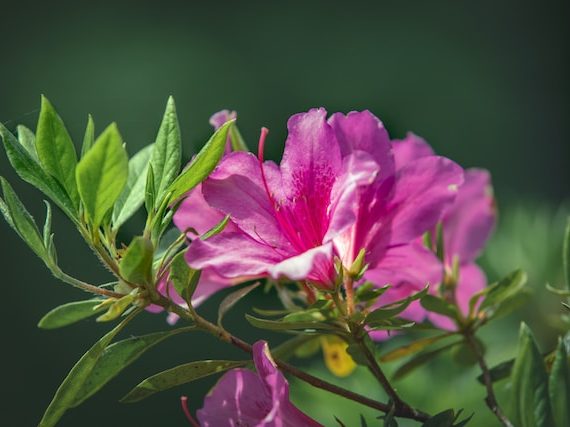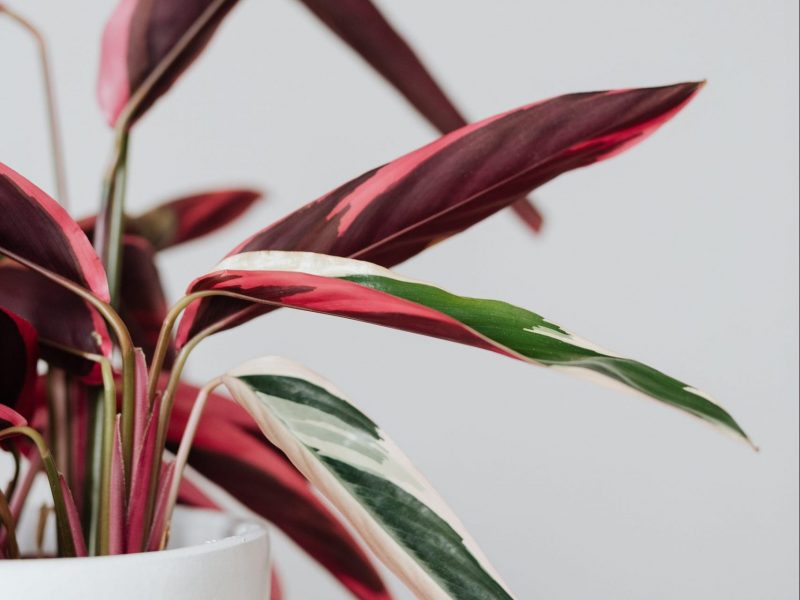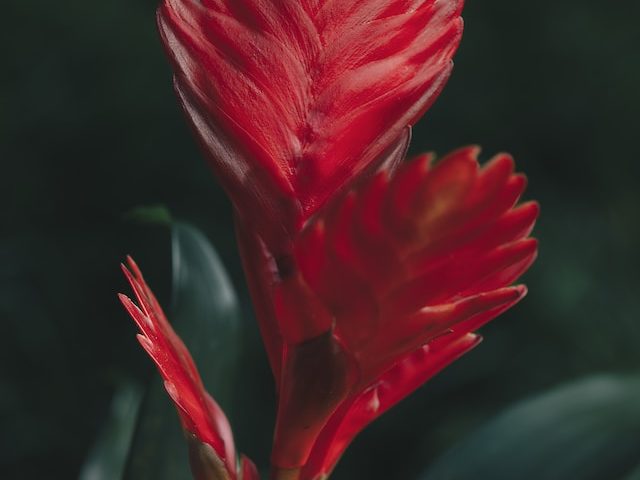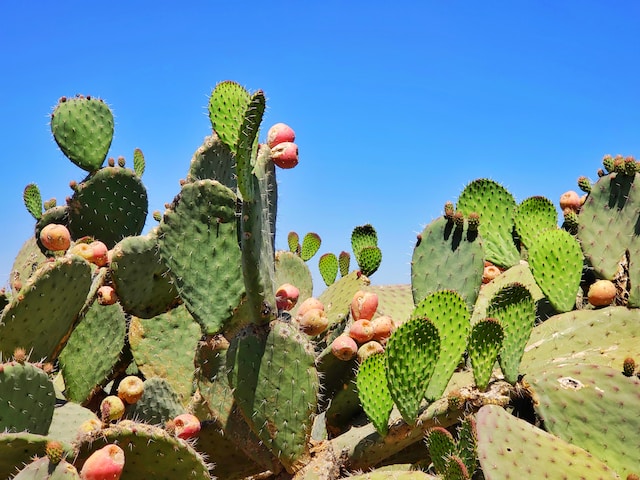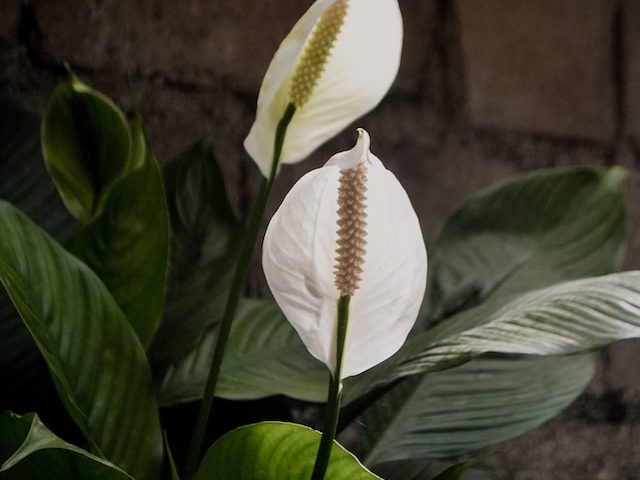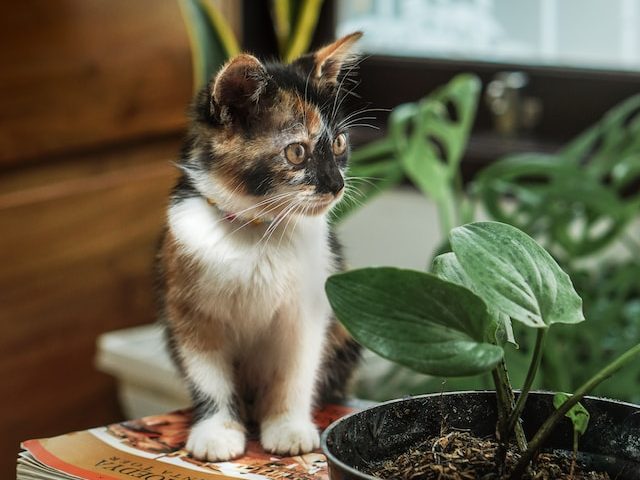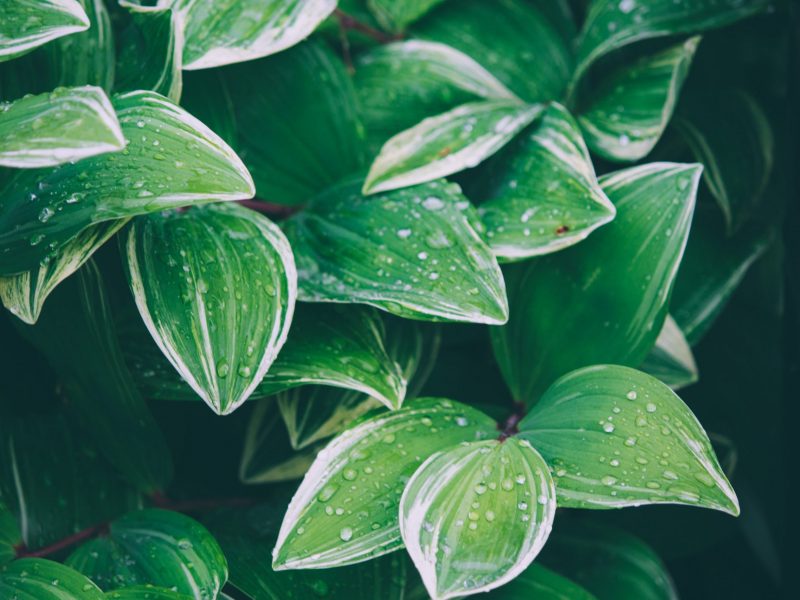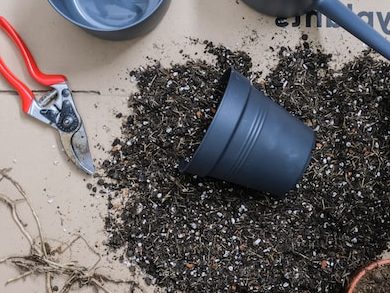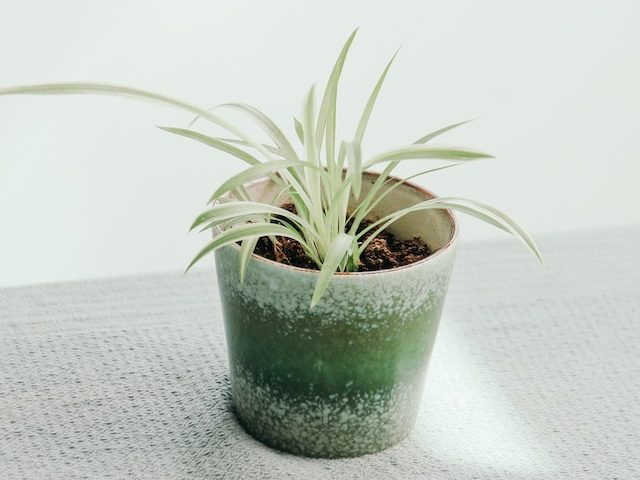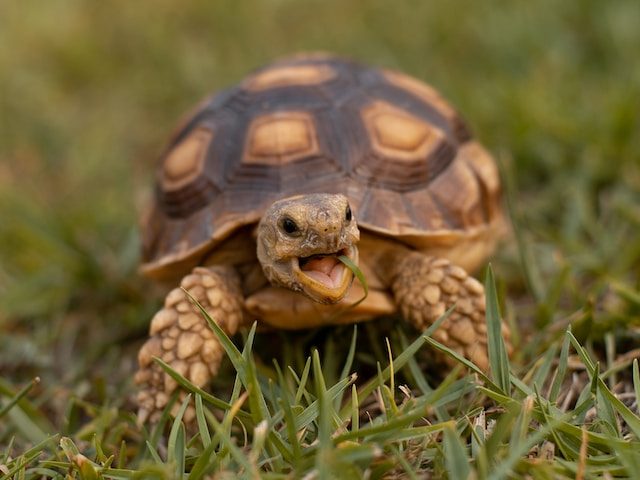Mistletoe Cactus
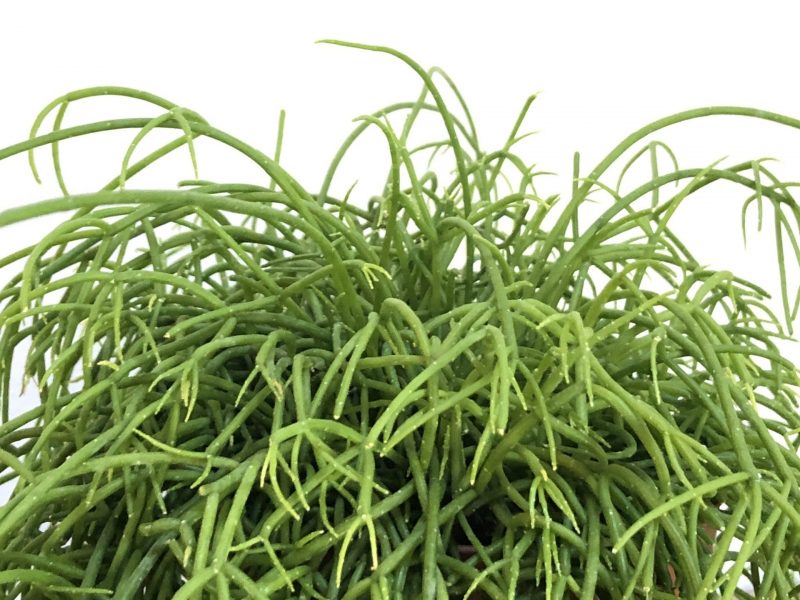
Introduction to Mistletoe Cactus
The Mistletoe Cactus, (Latin name: Rhipsalis baccifera), is a unique species of jungle cactus that’s well-suited to be grown and kept as a houseplant. Unlike many houseplants (especially cacti), this plant thrives in low-light conditions, making it a popular choice for adding a touch of greenery to darker spaces.
Mistletoe Cactus Appearance
The Mistletoe Cactus is easily recognizable with its long, branching stems covered in tiny hair-like bristles. These stems, which can measure up to several feet in length, have a pendulous form and typically form a dense, tangled mass. The plant’s small, white flowers bloom during spring and are followed by small, berry-like fruits.
Growth Habit
Unlike most cacti, the Mistletoe Cactus doesn’t have spines or a conventional tree-like shape. Instead, it’s more comparable to a vine, with its long, cascading tendrils that can hang down several feet. Although it’s a slow grower, given the right conditions, it can eventually reach quite a substantial size.
The History and Origin of Mistletoe Cactus
The Mistletoe Cactus is native to Central and South America, but its hardy nature and unique adaptability have allowed it to thrive in various parts of the world.
Interestingly these plants are actually epiphytic plants, which means they grow on the surface of other plants without harming them. In their natural environment, you’ll often find these cacti hanging from tree branches in rainforests, absorbing nutrients and water from the air and rain.
It received its common name due to its cascading growth habit and the small white berries it produces, which are reminiscent of mistletoe. Despite this resemblance, it’s important to note that the Mistletoe Cactus is not related to the traditional holiday mistletoe.
Varieties of Mistletoe Cactus
The Mistletoe Cactus, scientifically known as Rhipsalis, is a diverse and unique family of cacti. With over 35 species, it’s quite a fascinating group to explore. Let’s delve into some of the most popular varieties that you might want to add to your collection.
Rhipsalis Baccifera
Often referred to as the ‘Mistletoe cactus’, Rhipsalis Baccifera is the most widespread species of the genus. It’s an epiphytic cactus with slender, pendant stems that can reach lengths of up to 30 feet in the wild. Its small, white flowers are succeeded by translucent, white fruits, thus earning it the nickname ‘Mistletoe’.
Rhipsalis Cassutha
The Rhipsalis Cassutha, also known as ‘Cassutha Rhipsalis’, is a popular indoor ornamental plant. It has thin, threadlike stems that have a cascading growth habit, making it ideal for hanging baskets. Its tiny, creamy-white flowers are often followed by white or pinkish berries.
Rhipsalis Pilocarpa
Rhipsalis Pilocarpa, commonly known as ‘Hairy-Stemmed Rhipsalis’, boasts an impressive feature – hairy stems! This makes it a visually intriguing variety. It produces beautiful, white flowers that have a lovely scent, which is quite uncommon in cacti.
Rhipsalis Clavata
The Rhipsalis Clavata stands out due to its clavate (club-shaped) segments. These fleshy stems are typically green and covered with small, white bristles. It’s a slow-growing variety that produces small, yellowish-white flowers.
Mistletoe Cactus Lighting Needs
Unlike most cacti, this species is not a desert dweller but originates from the rainforests of South and Central America. Therefore, its lighting needs are quite different from what you might expect.
Primarily, Mistletoe Cacti thrive in bright but indirect light. This means that placing your plant in a spot where it will receive filtered sunlight through a curtain or shaded by other plants is ideal. Direct sunlight hitting the leaves can cause the plant to become scorched and may lead to leaf drop.
Avoid direct sunlight: Although this plant is a cactus, it’s not well-suited to the intense, direct sunlight that many desert cacti can handle. Avoid putting your Mistletoe Cactus in a spot where it’ll be exposed to direct sunlight for prolonged periods.
Low light: The Mistletoe Cactus can adapt to low-light conditions, but it’s not ideal for the plant’s overall health and growth. You will often find growth is slower and new leaves tend to be quite small if your plant isn’t getting enough sunlight. This doesn’t mean that your plant will die in low-light areas though so it can still be a good option for those shadier spots.
Watering Your Mistletoe Cactus: Dos and Don’ts
Do’s
- Do water your Mistletoe Cactus thoroughly: Soak the soil completely until water runs out the bottom of the pot. This ensures that the roots, even those at the bottom, receive sufficient hydration.
- Do allow the top inch of the soil to dry out before watering again: Overwatering is one of the main killers of houseplants, including these ones. Test the soil’s dryness by sticking your finger about an inch into the soil. If it’s dry, it’s time to water. You can also check the moisture using the chopstick method, the lifting method or buy using a moisture meter.
- Do mist your Mistletoe Cactus regularly: As a tropical plant, it appreciates a humid environment. A light misting every few days will help replicate its natural habitat.
Don’ts
- Don’t let your Mistletoe Cactus sit in water: After watering, be sure to empty the saucer underneath your pot. Sitting in water can cause root rot, which could be fatal to your cactus.
- Don’t water on a strict schedule: While it’s important to keep your cactus hydrated, sticking to a strict watering schedule can do more harm than good. Instead, pay attention to the dryness of the soil and the overall health of your plant to determine when to water.
- Don’t use cold water: Cold water can shock your cactus and interrupt its growth. Instead, use water that is at room temperature or slightly warmer.
Humidity and Temperature Requirements
Temperature: The Mistletoe Cactus prefers a temperature range between 60°F (15°C) and 80°F (27°C). This range replicates the natural environment of a tropical rainforest floor. During the winter, ensure the temperature does not drop below 50°F (10°C) as the plant can suffer from cold damage.
We strongly advise using a digital thermometer to keep track of temperature changes around your plant so you can act fast if there is a change before it starts to cause any issues for your plant.
Humidity: This species enjoys a high level of humidity, similar to that of its native rainforest habitat. An ideal humidity range is between 50% and 70%. If you live in a dry climate, consider using a humidifier or misting regularly to maintain the right humidity level.
Adjusting Temperature and Humidity
It’s essential to monitor and adjust temperature and humidity levels as needed to match your Mistletoe Cactus’ needs. Here are a few tips:
- Avoid placing your plant near air conditioning vents, heaters, or drafty windows. These spots can cause sudden temperature changes.
- Use pebble trays filled with water or a humidifier to increase humidity levels if needed.
- During hotter months, ensure your cactus gets plenty of ventilation to prevent overheating.
Fertilizing Your Mistletoe Cactus: What You Need to Know
The Importance of Fertilizer
Fertilizing your Mistletoe Cactus is essential for its health and growth. While the plant can survive without fertilizer, it may not reach its full potential without it. Fertilizing your cactus provides it with necessary nutrients that it might not get from the soil, especially if it’s an indoor plant.
It’s especially beneficial in terms of encourage plants to bloom so it can be a nice option to encourage some flowers from time to time.
Choosing the Right Fertilizer
When it comes to choosing a fertilizer, it’s important to select one that is specifically made for cacti. Look for a fertilizer that has a higher ratio of phosphorus to nitrogen, as this will promote healthy growth and flowering.
How Often to Fertilize
Your Mistletoe Cactus doesn’t need to be fertilized year-round. The optimal time for fertilizing is during the growing season, which is typically from spring to early fall. During this time, fertilize your cactus once a month. It’s best to avoid fertilizing completely in the winter and most of fall, as this is a period of rest for your cactus.
Repotting a Mistletoe Cactus: When and How to Do It
Repotting your Mistletoe Cactus doesn’t have to be a daunting task. If equipped with the right steps, repotting can be super beneficial to your plant’s health and encourage new stronger growth
When to Repot
The best time to repot this plant is during the late winter or early spring, just before the growing season begins. This is because your plant is entering the growth phase and if rootbound, this can cause some issues during this time. You might also consider repotting at other points of the year if you notice the following signs:
- The plant has outgrown its pot
- The roots are pushing through the drainage holes
- Water sits on top of the soil for a long time
- There is a decline in plant growth or health
How to Repot
Once you’ve determined that it’s time to repot your Mistletoe Cactus, you’ll need to follow these steps:
- Prepare the new pot: Your new pot should be slightly larger than the current one. Fill it about one-third full with a well-draining cactus mix.
- Remove the cactus from the old pot: Carefully tip the pot and slide the plant out. If it’s stuck, you can tap the sides or bottom to loosen it. It is a good idea to use gardening gloves for this part!
- Prune the roots: Inspect the roots for any signs of disease or rot and trim off any unhealthy parts using sterilized scissors.
- Place the cactus in the new pot: Set the plant in the center of the pot. The top of the root ball should be about an inch below the rim.
- Fill the pot with soil: Add more cactus mix, pressing it down lightly around the plant. Leave a little space at the top for watering as otherwise it’ll all overflow when you water your plant.
- Water the plant: Give your plant a little water to help settle the soil and then wait a week before properly watering to allow the roots to settle and recover from any damage. After that, you can resume your regular watering schedule.
Mistletoe Cactus Flowers
Characteristics of Mistletoe Cactus Flowers
Flowers of the Mistletoe Cactus are small, typically measuring between 0.2 to 0.8 inches in diameter. They can be white, yellow, red, or pink, depending on the specific variety of the plant. The bloom period usually happens in late winter or early spring, although some species may flower sporadically throughout the year. The whole blooming phase and frequency can be very unpredictable so take it as they come!
Light Requirements
Just like the plant itself, the flowers of the Mistletoe Cactus prefer a balance of light and shadow. Bright, indirect light is ideal. Too much direct sunlight can result in burnt blooms, while insufficient lighting can prevent flowers from opening fully.
Temperature and Humidity
Warm temperatures and high humidity levels are key to the successful blooming of Mistletoe Cactus. Maintain a temperature between 60-80°F and a humidity level above 50% for optimal flowering.
Watering and Fertilization
Regular watering and fertilization are necessary to support the blooming process. Water thoroughly, allowing the top layer of soil to dry between watering sessions.
Is the Mistletoe Cactus toxic?
The Mistletoe Cactus is generally considered non-toxic. However, caution should always be exercised since individual reactions can vary depending on sensitivity levels.
It is important to bear in mind that despite the Mistletoe Cactus being non-toxic, it is still not meant to be consumed by either humans or pets. Ingesting any part of the plant may cause gastrointestinal discomfort manifested in symptoms such as vomiting or diarrhea. Particularly for pets, such as cats and dogs, it is always best to prevent any potential ingestion.
Cleaning your Rhipsalis
Keeping your Mistletoe Cactus clean and dust-free is just as important as providing it with the right amount of light and water. Dust and grime can block light and hamper photosynthesis, which can affect the overall health and growth of your plant.
Here’s how to effectively clean your Mistletoe Cactus:
- Light Cleaning: For a light clean, gently dust the plant’s surface using a soft paintbrush. You can do this every couple of weeks to maintain the cleanliness and appearance of your plant.
- Thorough Cleaning: If your Mistletoe Cactus has accumulated a substantial amount of dust or grime, you might need to consider giving it a thorough cleaning. To do this, first, prepare a mix of mild soap and lukewarm water. Then, gently wipe the plant using a soft cloth or sponge dipped in the soapy water. Rinse the plant thoroughly to ensure no soapy residue remains.
Note: Avoid using harsh chemicals or detergents as these can damage the plant’s surface.
Common Pests and Diseases that Affect Mistletoe Cactus
Common Pests
- Mealybugs: These small, white insects can be found on the leaves and stems of your Mistletoe Cactus. They feed on the plant’s sap, causing yellowing and wilting. If not treated, they can severely weaken the plant. It’s important to know that a mealybug infestation can grow very quickly so it’s important that you treat it as soon as you spot the first sign of trouble.
- Scale insects: Another sap-sucking pest, scale insects can cause similar damage to mealybugs. They are often harder to spot, as they tend to blend in with the plant’s natural coloration.
Common Diseases
- Root rot: Overwatering your Mistletoe Cactus consistently can lead to root rot (they will forgive you for the occasional overwater if not severe). This disease can cause the roots to become soft and mushy, and if not treated, it can kill the plant. Make sure to replace any waterlogged soil immediately rather than waiting for it to dry out as you risk further damage.
- Fungal diseases: The Mistletoe Cactus is susceptible to a range of fungal diseases, particularly if it’s kept in conditions that are too damp or humid. Signs of fungal disease include spots on the leaves, a moldy smell or a white, cottony growth on the plant.
Mistletoe Cactus FAQs
Is the Mistletoe Cactus toxic?
You’ll be pleased to know that the Mistletoe Cactus is non-toxic and safe for pets and humans!
How quickly does the Mistletoe Cactus grow?
The Mistletoe Cactus is quite slow growing so some patience is required and you shouldn’t expect new leaves to come through all the time.
How much water does a Mistletoe Cactus need?
Mistletoe Cacti plants don’t like super dry soil like many other Cactus types but are also sensitive to overwatering and root rot so finding a good in-between is crucial.
Can the Mistletoe Cactus survive in low light?
One great thing about the Mistletoe Cactus is it can adapt to a range of light levels. Just be aware that you will often see slower and smaller growth in lower light areas though.
Common Problems with your Mistletoe Cactus
Why are the stems on my Mistletoe Cactus wilting?
Wilting Mistletoe Cactus stems are often a sign you are overwatering and the roots are starting to rot. Remove the damaged stems and replace the soil.
Why does my Mistletoe Cactus have black and mushy stems?
If you notice black and mushy stems on your Mistletoe Cactus, you have probably overwatered your plant. We recommend replacing the soil if it is still soggy and trimming off the black mushy stems.
Why is my Mistletoe Cactus dropping stems?
If your Mistletoe Cactus is losing stems, this is a sign of overwatering. Although they like to have moist soil, Mistletoe Cactus don’t like to be sitting in too much water. Replace the soil and cut back on your watering.
Why are there white masses on my Mistletoe Cactus?
If you notice white cotton-like masses on your Mistletoe Cactus it unfortunately means it is infected with mealybugs. This can be treated using a neem or insecticide product. Keep your infected Mistletoe Cactus away from other plants to prevent the infestation from spreading.
Why is my Mistletoe Cactus turning red?
Red stems on a Mistletoe Cactus are an indicator that the plant is receiving too much direct sunlight. Remove the damaged stems and place in a slightly shadier spot. Ideally somewhere with still bright, but indirect light.
Why does my Mistletoe Cactus have brown leaves?
Watering issues are the main cause of brown leaves on a Mistletoe Cactus, either too much or too little. If your Mistletoe Cactus has become quite soft and droopy, then overwatering is most likely the cause of the brown leaves. However, if your Mistletoe Cactus has become light brown in colour and is dry to touch, then you might be underwatering. Check the soil to determine whether or not watering issues are causing brown leaves on your Mistletoe Cactus.
If you can’t seem to find anything wrong with your watering routine, then the brown leaves on your Mistletoe Cactus might be caused by low humidity levels or an excess of fertiliser.
Why does my Mistletoe Cactus have yellow leaves?
The most likely cause of yellow leaves on your Mistletoe Cactus is overwatering. They really don’t need much moisture to thrive and if their potting mix is waterlogged for long periods of time it will start to cause the roots to rot. Once the roots have become damaged, your Mistletoe Cactus will struggle to keep the foliage alive which is why yellow leaves start to develop.
Before you change anything about how you water your Mistletoe Cactus, check the potting mix to see if it’s waterlogged and if the root system is damaged. Replace the potting mix if needed and trim away any rotten roots. Moving forward, you want to make sure you only water your Mistletoe Cactus when the potting mix has fully dried out and this should help to prevent any more yellow leaves in future.
Why is my Mistletoe Cactus losing leaves?
As with many common problems on a Mistletoe Cactus, if your plant is losing leaves it often means it has been overwatered or there are problems with drainage. Check the moisture levels in the soil to confirm the issue and adjust your watering habits in future to prevent any more leaves from falling off your Mistletoe Cactus.
If your Mistletoe Cactus is losing leaves because of soggy soil but you aren’t watering frequently, then you might need to increase the drainage. You can do this by adding perlite to the pot, increasing the size of the drainage holes and even adding a few stones at the bottom to prevent the drainage holes from becoming blocked. These steps should help prevent your Mistletoe Cactus from losing any more leaves.



